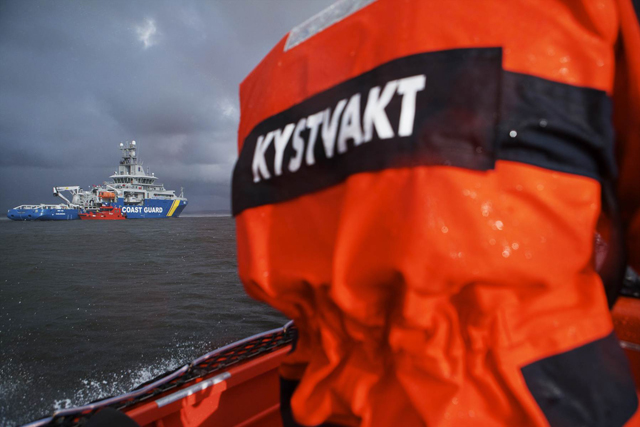Global overfishing is the rule and discards also represent a major unknown factor. Finally, so-called IUU fishing (illegal, unreported and unregulated fishing) is a major problem worldwide.
But how does Norwegian fisheries management fit in with this? Does Norway have sustainable fisheries management?
The new Marine Resources Act (in Norwegian) replaced the old Act relating to sea-water fisheries, etc., and parts of certain other acts, and forms the basis of Norwegian fisheries management. In this article we look at the key principles, which in combination form the basis for the Norwegian management of living marine resources.
We can enumerate five key principles for Norwegian fisheries, which in sum is a management that focuses on sustainability:
- Research and reliable statistics
- Marine protected areas
- Selective equipment
- Ban on discarding fish
- Good control of fishing activities and marketing of fish
The best possible basis for decisions
This means that research, both nationally and internationally since Norway shares most of the fish resources with other countries, forms the basis for determining quotas. Secondly, it is important to have good registration systems that include everything that is fished and delivered. Research and reliable statistics will form the basis of how much can be fished – how large the quotas of the different species should be.
Norway shares more than 90% of stocks with other countries, mainly Russia to the north and the European Union (EU) in the North Sea and Skagerrak. Therefore, each year the sharing of fish stocks are negotiated, resulting in fisheries agreements between the parties.
Marine protected areas
Since 1984, Norway has practised the opening and closing of fishing grounds in the Barents Sea and Norwegian Sea. The main reason for this type of fisheries management is to protect juveniles from being caught before it is ecologically sensible and the resources provides an good economic profit. The Directorate of Fisheries performs trial fishing with chartered fishing vessels and these trials form the basis for decisions on closing a defined area for different types of gear for shorter or longer periods.
Norway also practices a system with more permanently closed areas, either they are trawl-free areas to avoid conflicts between gear groups or areas closed to bottom trawling to protect benthic habitats such as corals and the like. Quite recently Norway and the EU have also agreed to close and open fishing grounds in the Skagerrak and the North Sea with the same point of departure as the proven practices in the north.
You can read more on the closing and opening of fishing grounds at the Directorate of Fisheries website.
Selective equipment
Equipment that is specially designed and developed to carry out "cleaner" fishing so that fishing is more targeted at the type of fish one is after has become quite common. Such equipment may be nets with a large mesh size so that the smaller fish escape, and it may be lines with large hooks to prevent small fish from biting. Perhaps the most important method to prevent small fish or the wrong species art is the use of so-called sorting grids in trawling, and in some cases purse seine fishing and seining. The sorting grids are intended to sort out the fish that are not supposed to be in the catch, either this is small fish in trawling for cod and haddock or large fish in trawling for shrimp.
Ban on discarding fish
As early as 1987 Norway introduced a general prohibition on discarding the most important fish species. This means that in principle all fish must be landed and is offset against the quota of individual vessels. As mentioned above, it is very important that all fish are recorded so that quotas are as precise as possible. In addition, it is reprehensible to throw food in the sea. To discard all fish for which one does not have a quota or which is below the legal minimum size such as is practised in the EU, is a waste of resources is sure to give researchers and authorities the wrong basis for determining quotas.
Good control is important
For the most part, Norwegian fishermen operate in accordance with the regulations. There are however always some who exploit opportunities to cheat or who in some cases participate in organized crime by collaborating to withhold large values from society. At sea, it is the Coast Guard that is responsible for most control, and there are vast ocean areas to be controlled. In smaller but intensive fisheries the Directorate of Fisheries also has vessels at sea which perform control and monitor that fishing is carried out in the best possible way.
All Norwegian fishing vessels above 15 metres must transmit position reports and catch reports electronically to the Directorate of Fisheries. This is an important control element, but also serves to simplify reporting for the fishing fleet. In addition, rescue authorities can benefit from being able to quickly locate fishing vessels to assist in rescue operations or who themselves require assistance. Tracking of fishing activity is also used to document fishing activities in cases of conflicting interests at sea and along the coast, such as the conflicts involving fisheries and oil activities.
The Directorate of Fisheries also conducts risk-based control, for example when landing the fish. In the case of the sale and export of fish, the Directorate of Fisheries cooperates with the tax and customs authorities to verify that traded fish is registered.
Does it work?
If we view all of these elements together, we may ask the question of whether the system works.
The answer is that favourable natural conditions combined with effective management return substantial value to the seafood industry and society.
Written by Olav Lekve.
